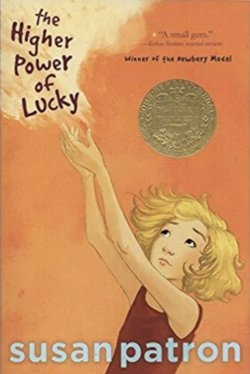Peter Shea

Review of The Higher Power of Lucky by Susan Patron (New York: Atheneum Books for Young Readers, 2006). Originally published in Thinking: The Journal of Philosophy for Children 18(4): 1.
This middle grade novel, which won the Newbery Medal, is about a ten-year-old girl, Lucky. Her mother has been killed in a freak accident, her father is missing, and she is being cared for by her father’s former girlfriend, Brigitte, in a tiny town at the edge of the California desert.
Early in the story, Lucky’s friend Lincoln (so named because his parents want him to be President) asks her to bring a black marker and meet him by a sign on the school bus route. The sign says: “Slow Children at Play.” Miles, a beginning reader intensely interested in signs, has asked Lincoln about this sign; does it mean that children in Hard Pan move slowly, or that they are stupid? Lincoln changes the sign to read, “Slow: Children at Play.” Lucky calls the change “Presidential.”
This small episode sounds the themes of this fine book. Signs matter. A person discovers how to proceed by reading signs. Misreading a sign can be costly. People help each other out by helping them understand. And, finally, children are not slow. They quickly and obsessively synthesize information to make meaning: maps to navigate by, words for communication, and models for how to be themselves.
Lincoln’s solution prefigures the actions in the book in another way: it is elegant, economical, and appropriate. No one is going to fuss about “vandalizing public property,” confronted with two accurately placed dots. Throughout the novel, characters solve problems with similar economy and elegance. Brigitte freaks out about a snake in the dryer. Lucky tapes the door shut and bangs on the lid until it leaves through the vent. Brigitte is satisfied, and the snake is safe.
The novel takes place in Hard Pan, an old mining town named for the way the ground resists miners digging down to the silver. Like its soil, the town looks hard and ungenerous: a cluster of trailers and patched-together houses. Only a few people in the town have jobs; most live on welfare or pensions. But, though adult readers know that this is a poor place, the text never presents the town as poor. It is, for Lucky, a treasure house of information and insight. Brigitte speaks French, a language which alternately fascinates and repels Lucky. In her job cleaning up at the Found Object Wind Chime Museum and Visitor Center, Lucky gets to eavesdrop on three different Twelve Step meetings: for alcoholics, for smokers, for overeaters. She overhears stories and secrets, and encounters the idea of a Higher Power, for which she immediately begins to search. In school, she learns accurate natural history, brain physiology, and evolution. (Lucky names her dog “HMS Beagle” in honor of Darwin.) From these lessons, she takes ideas to think about and to think with. The model of her brain as containing many folds and a great surface area suggests to her that she might be able to have more than one feeling or idea on a given topic at the same time, and so she is not surprised when that happens.
The town is also connected to the wider world. People log on to the internet, belong to world-wide associations. Brigitte is taking an online course in restaurant management. Lincoln, a knot enthusiast, belongs to the International Guild of Knot Tyers.
So – Lucky is lucky. She has art and science and religion and technology to help her think about the world and construct her life. Lucky is also intelligent and, in a very non-standard way, erudite. Lots of information is available to her, and she has the stamina, hope, and flexibility to keep re-arranging that information in new combinations, making new connections:
“No, the ants acted like one single machine, instead of zillions of tiny minds and bodies. They had good teamwork. If some died, the others didn’t stand around worrying about it. For ants, there was definitely no “I” in “team.”
So, as Lucky was realizing that, to an ant, its Higher Power might be the whole colony itself, Lincoln sauntered up.” (21)
Patron’s story is not just a description of Lucky’s musings. Lucky has a nest of problems to solve. She has not yet scattered her mother’s ashes. She has reason to believe that her guardian wants to leave her and return to her home in France. Little Miles, whose mother is mysteriously missing, has attached himself to Lucky in endearing and annoying dependence. With these problems in mind, Lucky goes searching for the guidance of a Higher Power, for some sign about a graceful way forward. What she finds is right and strange and multi-dimensional and totally beyond summary. For this, one has to read the book.
There’s been a flap in the United States about one part of the story: Lucky hears about a dog being bitten on the scrotum by a rattlesnake. Some people don’t want the word “scrotum” in a kids’ book, perhaps because that limits the book’s read-aloud potential; librarians may not want to explain “scrotum” to six-year-old kids. But I am not convinced this is a read-aloud book; it seems far more a treasure that children will discover and take off to read in private places. More important, this story shows that many different bits of information are useful to human beings in making sense of their lives. They need to know about Higher Powers, brains, knots and scrotums.
